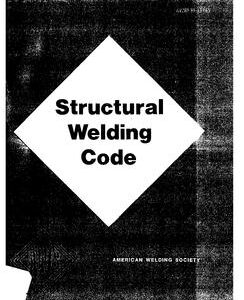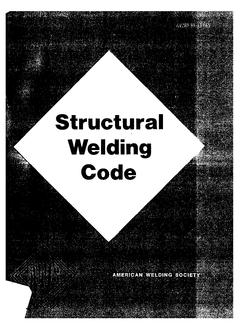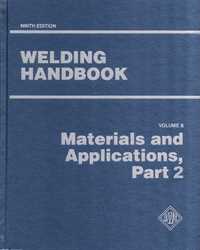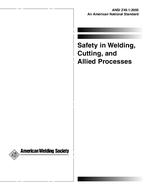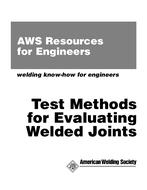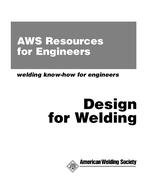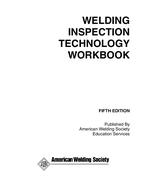Description
In 1928 the first edition of Code for Fusion Welding and Gas Cutting in Building Construction was published by the American Welding Society. Since then, eight other editions of the Code have been published. During the latter part of July 1934, a committee was appointed to prepare specifications for the design, construction, alteration, and repair of highway and railway bridges by fusion welding. The first edition of the specifications was published in 1936, followed by seven other editions.
Until 1963 there were two committees, one for the Building Code and one for the Bridge Specifications. These two major committees had recognized the community of interest to establish a better level of structural welding standardization in the industry and had been cooperating for some time. In June 1963, these two committees were discharged and a Structural Welding Committee organized. This committee is concerned with the preparation of standards and the promulgation of sound practices for the application of welding to the design and construction of structures. Since its organization the Committee has prepared the Building Code and the Bridge Specifications. The 1972 Edition was prepared to cover structural welding in general, along with specific requirements for buildings, bridges, and tubular structures. This eliminated the duplication in previous editions by combining the Code and Specifications into a single document.
This 1975 edition includes the published revisions, errata, and editorial changes to the previous edition. In addition, it includes additions and changes necessary to keep the Code current with practices and requirements for structural welding.
Sections 1 through 7 constitute a body of rules for the regulation of welding in steel structures. Sections 8, 9, and 10 contain additional rules applicable to specific types of structures – buildings, bridges, and tubular structures. One of the latter should be used as a supplement to the first seven sections. For general structurat welding of statically-loaded structures where no specific code or specification is applicable, Section 8 is recommended.
Certain shielded metal arc, submerged arc, gas metal arc, and flux cored arc welding procedures plus certain types of joints have been thoroughly tested and have a long record of satisfactory performance. These are designated as prequalified and may be employed without presentation of further evidence (1.3). These procedures and joints include most of those that are commonly used. However, the purpose of defining prequalified procedures and joints is not to prevent the use of other procedures as they are developed. When other processes, procedures, or joints are proposed, they are subject to the applicable provisions of Sections 2, 3, and 4 and shall be qualified by tests in accordance with the requirements of Section 5. In the same section the requirements for qualification of welders, welding operators, and tackers are also given.
This code does not concern itself with design considerations as arrangement of parts, loading and the computation of stresses for proportioning the load-carrying members of a structure and their connection. Such considerations, it is assumed, are covered elsewhere in a general code or specification such as a Building Code, AISC Specification for the Design, Fabrication and Erection of Structural Steel for Buildings, American Association of State Highway and Transportation Officials Standard Specifications for Highway Bridges, American Railway Engineering Association Specifications for Steel Railway Bridges, or other specifications prescribed by the owner.
Fatigue testing has demonstrated that any abrupt discontinuity of section and stress path is a factor adversely affecting the strength of members subject to cyclic loading. Gradual rather than sudden transitions of sections should be employed and for the same reason, butt welds are preferable to fillet welds.
In the case of old structures, material of questionable weldability may have been used (including wrought iron or high strength structural silicon or nickel steels). Accordingly, it is advisable iymaking repairs to an old structure to obtain samples of the material and make laboratory tests for developing the proper welding procedure and weld values.
Comments or inquiries pertaining to this code are welcome. They should be addressed to: Secretary, Structural Welding Committee, American Welding Society, 2501 N.W. 7th Street, Miami, Florida 33125.
Product Details
- Edition:
- 75
- Published:
- 01/01/1975
- Number of Pages:
- 180
- File Size:
- 1 file , 10 MB

 ISPE Guide: Biopharmaceutical Process Development and Manufacturing
ISPE Guide: Biopharmaceutical Process Development and Manufacturing 